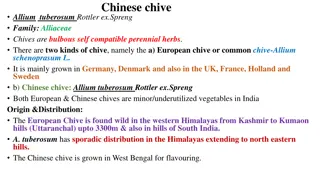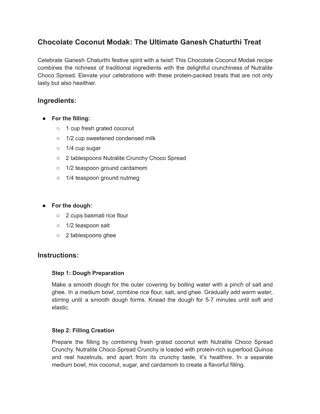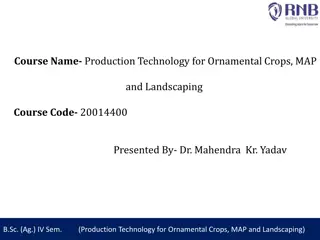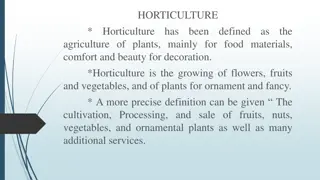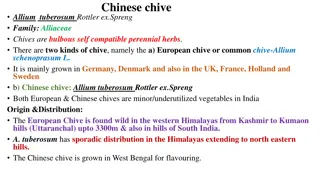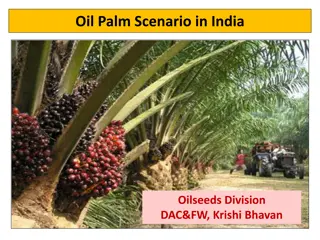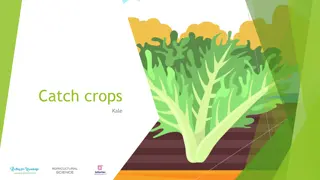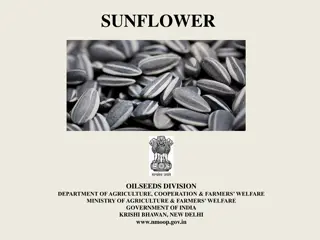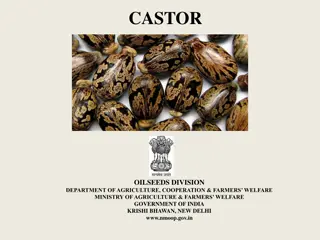
Coconut Cultivation Guide: Varieties, Planting, and Harvesting Tips
Learn about coconut cultivation techniques including suitable soil conditions, tall and dwarf coconut varieties, hybrid options, seed nut maturity, spacing, and planting tips. Discover the best practices for successful coconut farming in this comprehensive guide.
Download Presentation

Please find below an Image/Link to download the presentation.
The content on the website is provided AS IS for your information and personal use only. It may not be sold, licensed, or shared on other websites without obtaining consent from the author. If you encounter any issues during the download, it is possible that the publisher has removed the file from their server.
You are allowed to download the files provided on this website for personal or commercial use, subject to the condition that they are used lawfully. All files are the property of their respective owners.
The content on the website is provided AS IS for your information and personal use only. It may not be sold, licensed, or shared on other websites without obtaining consent from the author.
E N D
Presentation Transcript
COCONUT CULTIVATION COCONUT CULTIVATION M.Pandeeswari, Assistant Professor, Dept. of RDS, AAC
COCONUT (Cocos nucifera L.)Palmae Soil Light sandy soils to heavy soils with a pH - 5.2 to 8.0. Proper drainage, good water-holding capacity, presence of water table within 3 m and absence of rock or any hard substratum within 2 m of the surface. Altitude: 600 to 900 m Rainfall: 200 cm per year. Planting seasons June - July, December - January The planting can also be taken up in other seasons wherever irrigation and drainage facilities are available.
List of Tall Varieties West Coast Tall East Coast Tall Chandrakalpa or Lakshadweep Ordinary (LCT) Phillippines Ordinary Kerachandra) VPM - 3 (Andaman Ordinary), Aliyar Nagar 1 (ALR 1),Aliyar Nagar 2 (ALR 2) Tiptur Tall, Kera Sagara (Seychelles), Benavali Green Round (Pratap) Phillipines Tall (Chandrathara), Assam Tall (Kamaroopa), Kalpadhenu Kalpa Pratiba, Kalpa Mitra, Kerakeralam
List of Dwarf Varieties (Tender coconut) Chowghat Orange Dwarf (COD) Chowghat Green Dwarf (CGD) Chowghat Yellow Dwarf (CYD) Gangabandom Malaysian Dwarf Yellow Strait Settlement Dwarf Green Kalpa Raksha
List of Hybrid Varieties Kerasankara (WCT x COD), Chandrasankara (COD x WCT), Chandralaksha (LCT x COD) Keraganga (WCT x GBGD), Lakshaganga (LCT x GBGD), Anandaganga (ADOT x GBGD) Kerasree (WCT x MYD), Kerasoubhagya (WCT x SSAT), VHC 1 (ECT x MGD), VHC 2 (ECT x MYD) VHC 3 (ECT x MOD)Gadavani Ganda (East Coast Tall X Gangabandom) Kalpa SamrudhiKalpha Shankara (Chowghat Green Dwarf X West Coast Tall)
Maturity of Seed Nut The mature nuts are harvested when at least one nut in the oldest bunch starts becoming dry. In Tall varieties, it takes 11-12 months to become a matured seed nut whereas in dwarfs, nuts will mature in 10-11 months after emergence of the inflorescence. Spacing Adopt a spacing of 25' x 25' (7.5 x 7.5 m) with 175 plants/ha. For planting in field border as a single row, adopt 20' spacing between plants. Planting Dug pit size of 3 x 3' x 3'. In the pits, Fill the pit to a height of two feet (60 cm) with FYM, red earth and sand mixed in equal proportions. At the center of the pit, remove the soil mixture and plant the seedling after removing all the roots. Press the soil well around the seedling
Manuring Super Muriate of Potash(kg/tree) Age(Years) FYM(kg/tree) Urea(kg/tree) Phosphate(kg/tree) 1 10 0.308 (140 g N) 0.500 (80 g P2O5) 0.480 (300 g K2O) 2 20 0.616 (280 g N) 1.000 (160 g P2O5) 0.960 (600 g K2O) 3 30 0.924 (420 g N) 1.500 (240 g P2O5) 1.440 (900 g K2O) 4 40 1.23 (560 g N) 2.000 (320 g P2O5) 1.920 (1200 g K2O) 5th year onwards 50 1.23 (560 g N) 2.000 (320 g P2O5) 1.920 (1200 g K2O)
Harvesting Twelve months old nuts are harvested at the interval of 30-45 days for seed as well as copra making and culinary purposes. For household use keep the nuts in vertical direction. However, for tender nut purposes 7 to 8 months old nuts are harvested. The nuts can be harvested using coconut climbers. Nuts which are 11 months old give fiber of good quality. This is suitable for coir fiber. In case of tall the nuts harvested for seed purpose can be stored for 2 to 3 months period before sowing, whereas in case of dwarfs and hybrids, nuts should be sown with in a period of 10 15 days of harvest. On an average, we can have eight harvests, though the coconut palm produces inflorescence every month.
Yield Nut yield (Nos / tree / year) S.No Variety Earlyness (year) 1 Hybrid 100 3 - 5 2 Tall 60 - 80 6 - 7 Dwarf (tender coconut) 3 70 - 90 4 - 5






